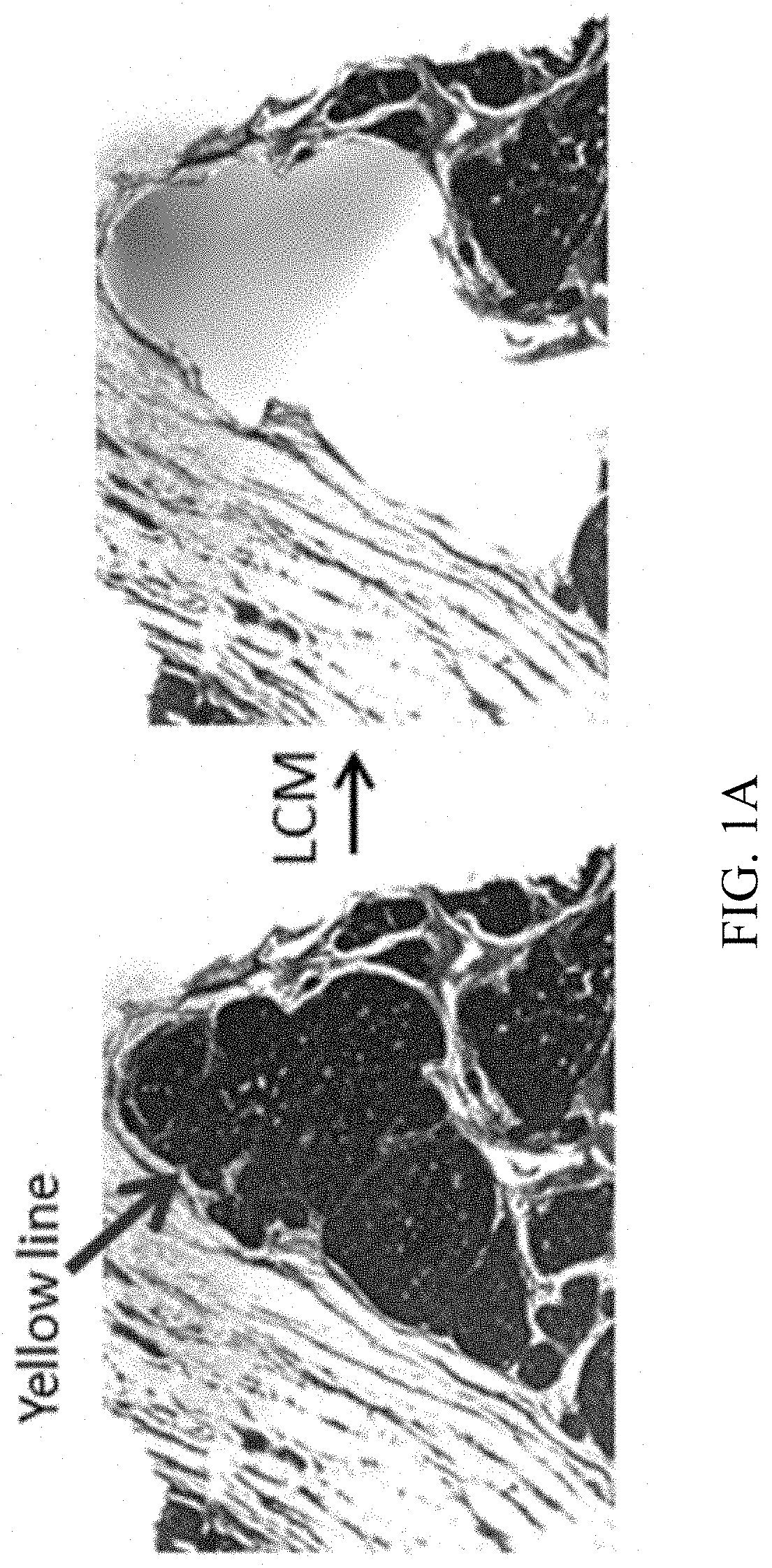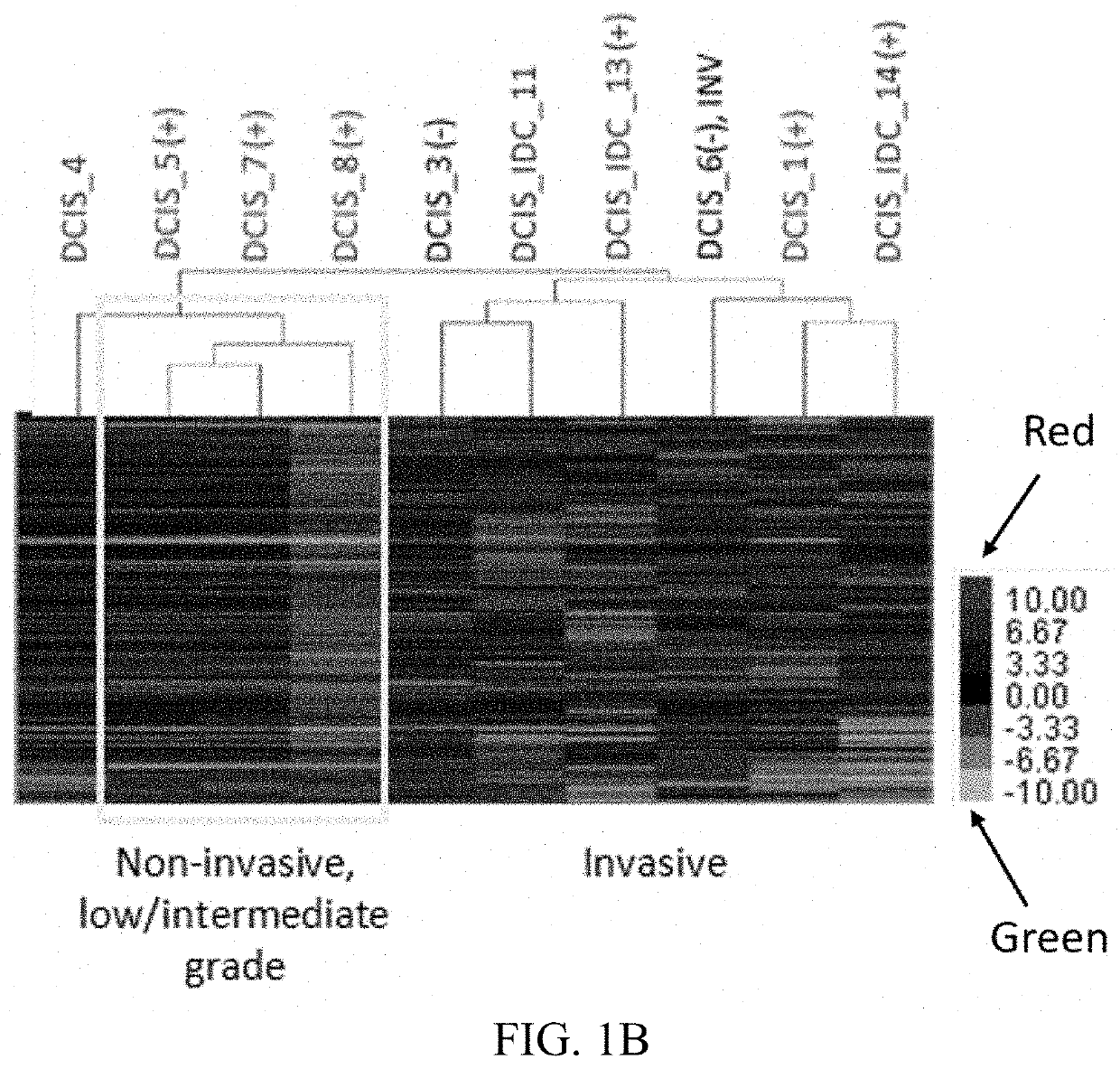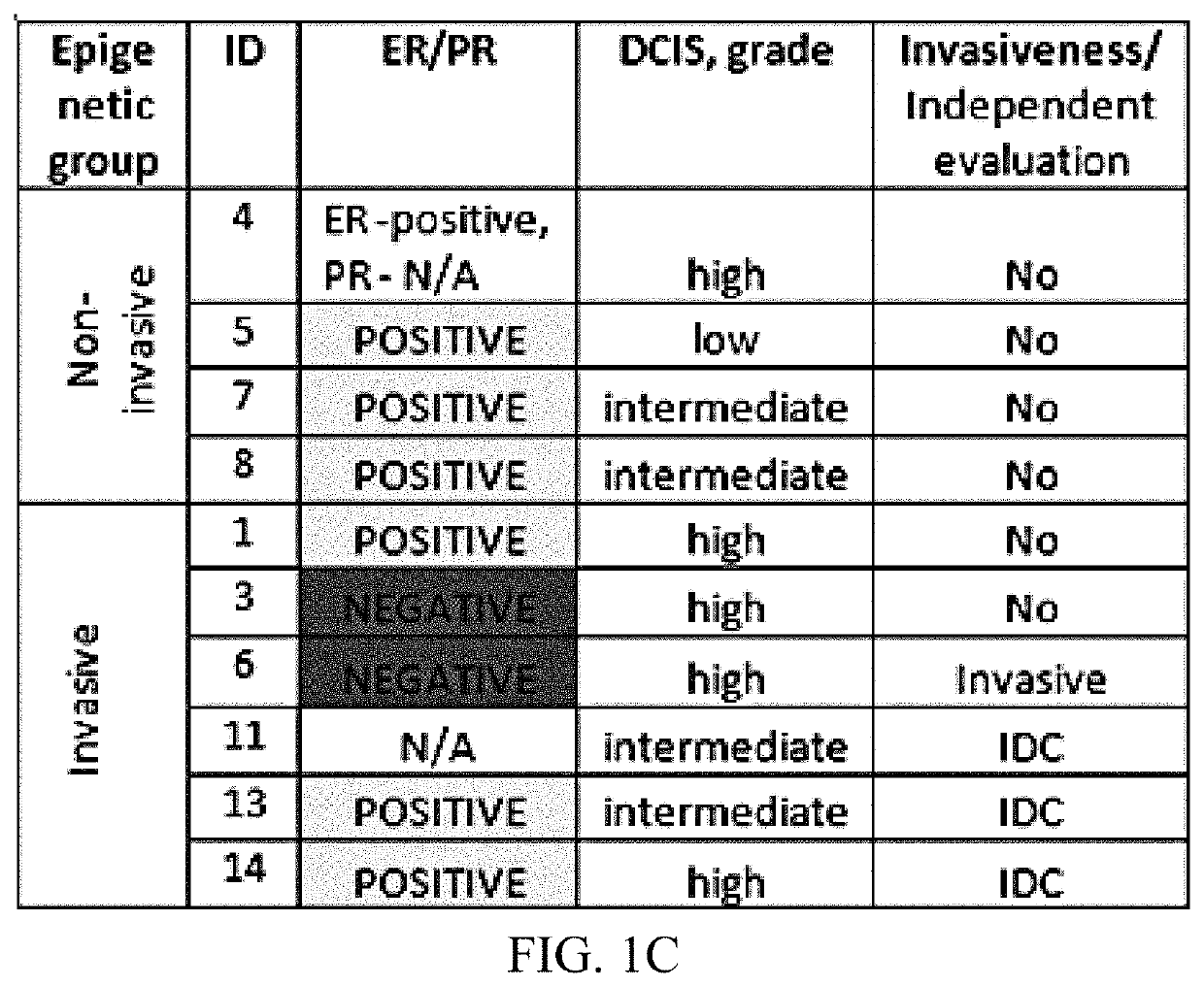DNA methylation diagnostic test for breast cancer
a technology of methylation and breast cancer, applied in the direction of anti-cancer agents, biochemistry apparatus and processes, drug compositions, etc., can solve the problems of overtreatment of a significant number of patients, no tool to predict concurrent or subsequent invasion of dcis,
- Summary
- Abstract
- Description
- Claims
- Application Information
AI Technical Summary
Problems solved by technology
Method used
Image
Examples
example 1
nt of an Epigenetic Biomarker Panel for DCIS Invasiveness
[0218]DNA methylation patterns were evaluated in 7 DCIS samples from patients without reported invasion (pure DCIS), and 3 DCIS samples from patients with IDC. In order to identify DNA methylation changes exclusive to cancer cells, malignant cells located within the involved ducts of DICS were isolated by laser capture microdissection (FIG. 1A). Genome-wide profiling of DNA methylation was performed. Reduced representation bisulfite sequencing (RRBS) was used to evaluate DNA methylation patterns at gene promoters in captured cells (FIG. 1C). Clustering analysis clearly separated DCIS samples into two epigenetic groups. The first DCIS epigenetic group was associated with almost no DNA methylation at promoters and obtained from patients lacking invasion (pure DCIS). At the same time, specimens from the second epigenetic group of DCIS were characterized by extensive accumulation of DNA methylation at promoters. This group contain...
PUM
| Property | Measurement | Unit |
|---|---|---|
| length | aaaaa | aaaaa |
| deoxyribonucleic acid | aaaaa | aaaaa |
| thermostable | aaaaa | aaaaa |
Abstract
Description
Claims
Application Information
 Login to View More
Login to View More - R&D
- Intellectual Property
- Life Sciences
- Materials
- Tech Scout
- Unparalleled Data Quality
- Higher Quality Content
- 60% Fewer Hallucinations
Browse by: Latest US Patents, China's latest patents, Technical Efficacy Thesaurus, Application Domain, Technology Topic, Popular Technical Reports.
© 2025 PatSnap. All rights reserved.Legal|Privacy policy|Modern Slavery Act Transparency Statement|Sitemap|About US| Contact US: help@patsnap.com



